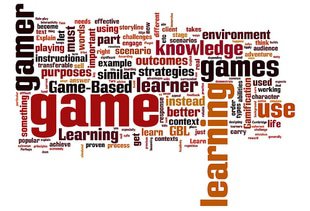Ruby on Rails Gamification

Ruby on Rails is an open source modern framework that allows users to create fantastic applications. On this page of our site, we are going to look at Ruby on Rails gamification, what gamification is, and why it's so popular.
What is the Ruby on Rails Framework?
You've probably used applications build on the Ruby on Rails framework without even realizing it. Some of the most popular applications include GitHub, Airbnb, Twitch, SoundCloud, Hulu, Zendesk, and more. There are literally hundreds of thousands of applications that have been built using Ruby on Rails since it first released back in 2004.
In simple terms, Ruby on Rails is an open source software that is free for anyone to use and contribute to the code. Ruby is the actual programming language that is used and Ruby on Rails often shortened to RoR is a web-application framework that is implemented in Ruby.
Another term that you will come across especially in relation to Ruby on Rails gamification is a gem. A gem is a library that contains a specific piece of functionality. It also contains any files or assets that may be required for the functionality. Gems can be found for all sorts of functions within applications including handling money and currency, integrating with credit card processing, tools to make coding easier, and more. The Merit gem is one of the most common when it comes to Ruby on Rails gamification and this gem adds reputation behaviour to the app in the form of badges, user points, and rankings.
What is Gamification?
Gamification is a new marketing technique that is based on rewarding users in a bid to keep them focused and engaged on what it is you want them to do. In essence, gamification keeps users coming back for more. It's most often seen in games where players can level up and get continued rewards. It isn't really a new concept and has been around for years. The reason it's growing in popularity now is that there are so many more young entrepreneurs building applications, games, and services for younger audiences. The younger audience bores easily and they are demanding features that will keep them engaged and coming back for more.
Gamification Features and How they Work
There's no big secret as to how gamification works and almost every Ruby on Rails gamification application will have one of the five most commonly used game mechanics. Whether you are playing at online casinos, the latest gem game on your mobile, or whatever it happens to be, merits and rewards will be the focus. The five most common features are:
- Points: This is where you are rewarded with points the more you play. This type of gamification is often used at online casinos in their rewards programs. The more games players play, the more points they earn. The points can then be redeemed for free casino money and real cash. Some casinos use points to move players up on their VIP program and the higher they climb the more benefits they receive.
- Badges: These are the most visible elements of Ruby on Rails gamification. They can perform a number of functions but are mostly used to show player status and progress. Badges exist to show progress and players are motivated to obtain certain badges and complete challenges and goals to obtain them.
- Levels: Levels are really popular in games. This is where skills are pre-set within a level and once a player obtains certain skills, collects items, etc, they can move to the next level. In some modern games, levels are often included within storylines and once a player accomplishes something they move to the next level. This allows for sub-tasks and additional skill-building exercises to be incorporated into the game or application.
- Leaderboards: With leaderboards, the points that players accumulate will move them up the leaderboard. In online casinos, we see this quite often in slots tournaments where players take part to win a share of a huge jackpot prize if they can stay towards the top of the leaderboard. They may have a day or a week to take part and the more they play, the more points they get, and the higher up they feature on the leaderboard at the end of the tournament. The leaderboard is usually visible to all participants as well and anyone who is competitive loves this.
- Challenges: Goals, missions, and challenges within games help prevent boredom. They motivate players to keep playing and in this way, more time is spent on the game. When players complete missions they get treats such as free spins, bonuses, etc.
Popularity of Gamification
Gamification has really taken over and nearly all new apps, games, and casino products have some form of gamification built into them. Ruby on Rails gamification and its ease of use allow more and more developers to create apps that not only enhance gameplay but help increase productivity in all areas of life.
